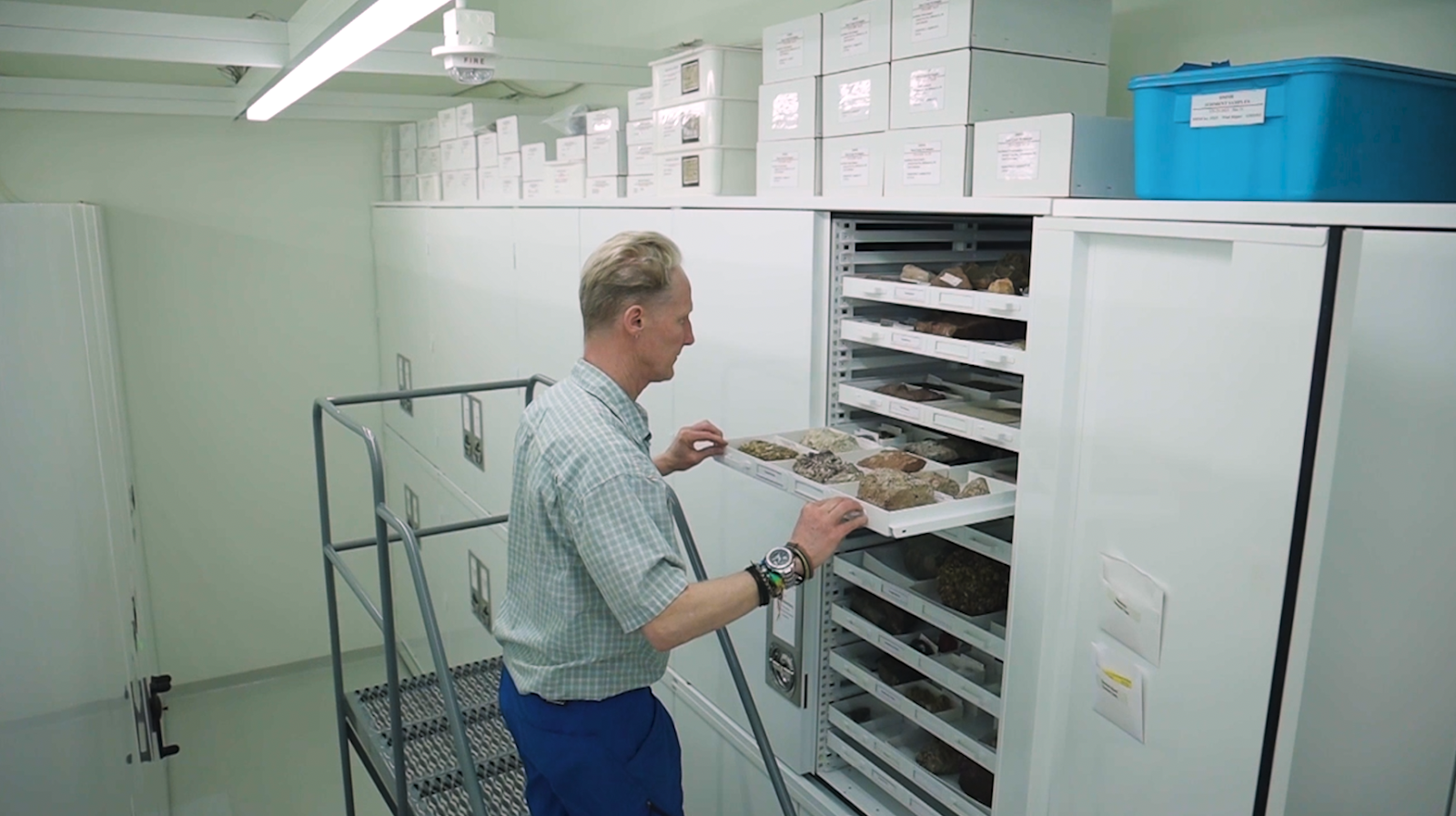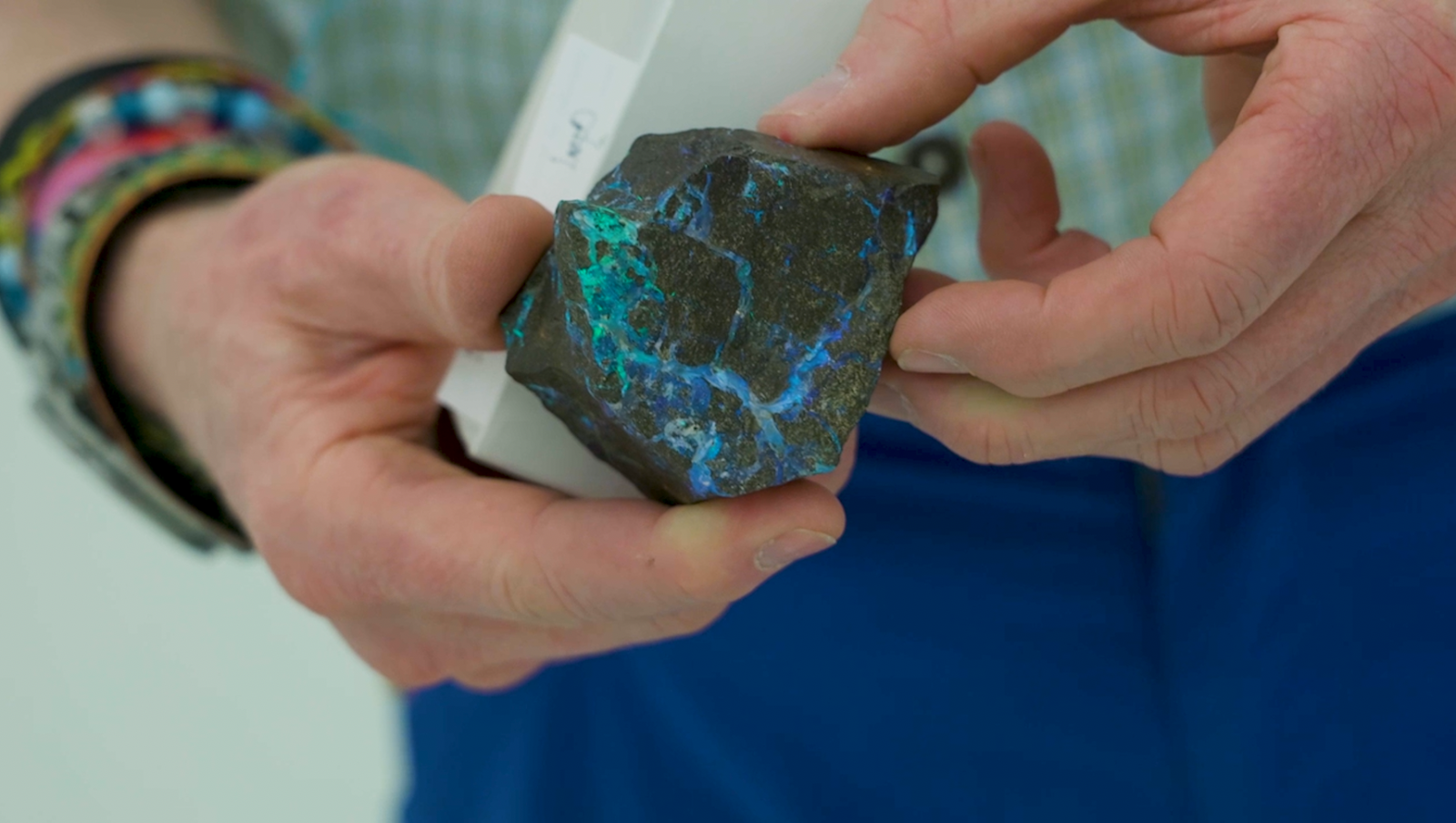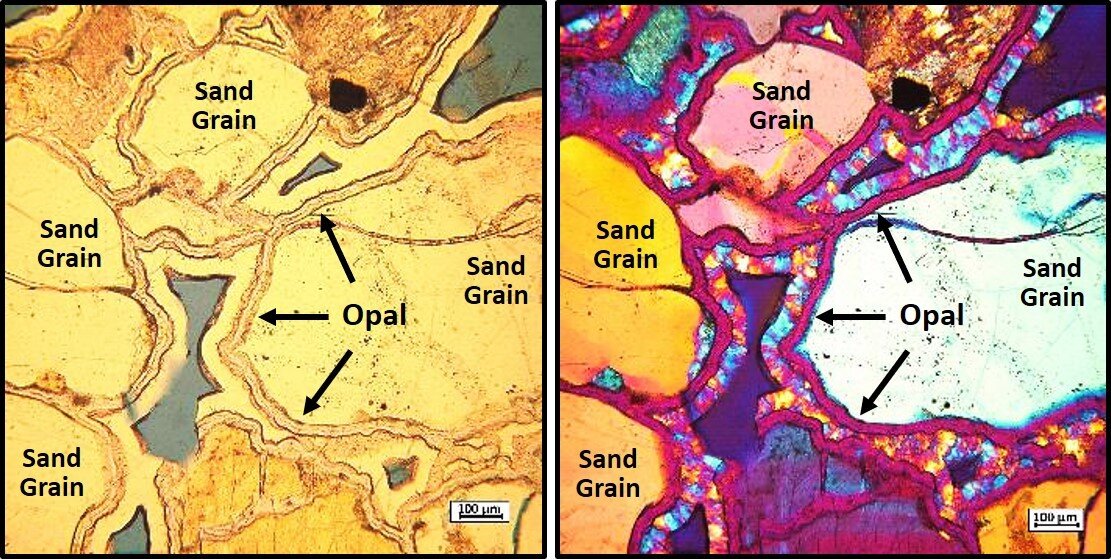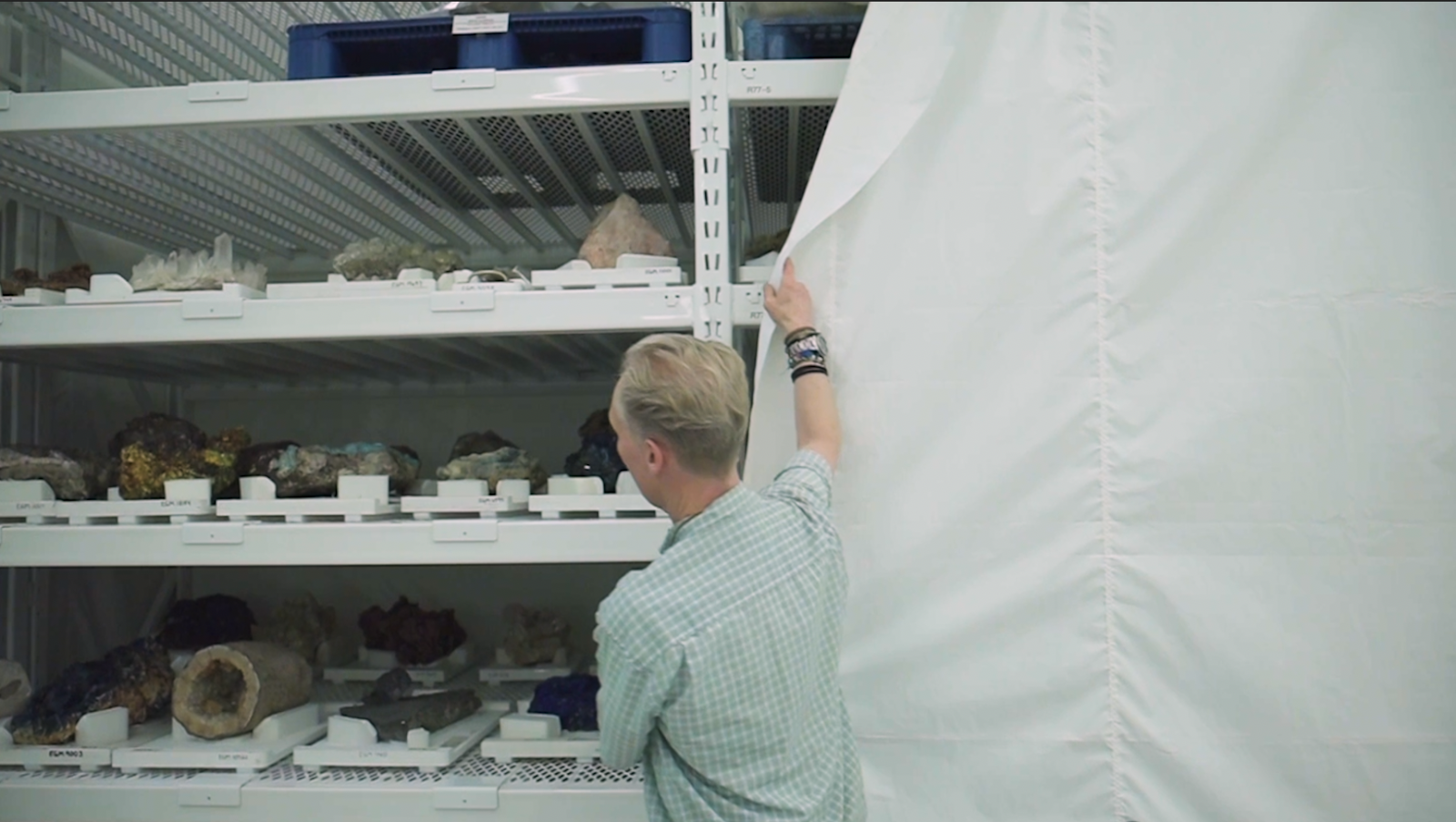Colorado Science: Researchers discover secret to Castle Rock's longevity

CASTLE ROCK, Colo. — High atop one of Castle Rock’s many green hills stands the town’s eponymous Castle Rock. The rock formation looms over the Outlets, open spaces, and quickly growing residential community of the city.
The stone stronghold, which is comprised of a number of different types of rocks and minerals, has fended off erosion for centuries, leading scientists to ask: how has Castle Rock held its shape?
The answer, recently uncovered by research associates from the Denver Museum of Nature and Science, makes the storybook castle sound even more like something from a fairytale.
“This project started like many projects in science,” said Dr. James Hagadorn, one of the research associates on the study. “By serendipity.”
Researchers attribute the castle’s exceptional durability to the presence of microscopic amounts of opal, the precious gemstone often used in jewelry, which was discovered throughout the Castle Rock conglomerate in 2023.
“They’ve got a beautiful color to them… when light hits it, you get that sheen, a rainbow of colors,” said Hagadorn. “That’s the type of stuff that’s gluing together our own Castle Rock.”
Deep in the bowels of the Denver Museum of Nature and Science – fifty-five feet, to be more exact – Hagadorn held a palm-sized sample of Australian opal, gleaming like a crystalline rainbow in the museum’s fluorescent storage room.
An array of rock samples fills the room from floor to ceiling, most of which were organized into a large, white shelves. The low hum of an enormous humidistat, a humidity-controlling device needed to preserve the rock samples, spreads throughout the room. Each shelf weighs several tons.

Dr. Hagadorn opens one of the Denver Museum of Nature and Science’s underground storage shelves containing tons of rock samples.
Photo: Chase McCleary, Rocky Mountain PBS
Dr. Hagadorn, a geologist from the Denver Museum of Nature and Science, was one of a team of researchers who dug into Castle Rock’s make-up, but many of Colorado’s iconic mountains, buttes and mesas.
According to Hagadorn, Dr. Mark Longman, a research associate at the museum, was hiking through Castlewood Canyon State Park when he began to grow curious about the geological makeup of the surrounding bluffs.
Dr. Longman knew that the bluffs were constructed of conglomerate rock, a type of sedimentary rock formed through the combination of various other rock fragments.
These fragments are held together by what geologists call the “matrix,” or “cement,” binding agents commonly made up of some combination of silica, calcite or iron oxides, according to Oregon State University.
Conglomerate rocks make up many of the cliffs across areas south of Denver, explained Hagadorn, though those found in Castle Rock are specifically named “Castle Rock Conglomerates,” for which the town is named.
Dr. Longman knew that these conglomerate rocks tend to be particularly erosive, leading him to question how some – such as the bluffs or structures like Castle Rock – were so durable in the face of tough Colorado elements.
“Typically, that kind of rock gets broken down by wind, by rain…” said Hagadorn, “but in this case, those rocks are so hard, you can actually use them as building stone.”
That’s when Longman tapped Hagadorn and museum research associate Joan Burleson to begin taking samples of Castle Rock Conglomerates for closer inspection.
They conducted petrographic examinations (the precise examination and classification of rocks), using a specialized light microscope with magnifications as high as 400x to study wafer-thin sections of the rock. Some were as as thin as a few human hairs, according to Hagadorn.
The team’s microscopic discoveries were as surprising as they were exciting.
“Turns out that the reason this rock is as hard as most concrete is because it’s glued together with a very special cement,” said Dr. Hagadorn. “That cement is a mineral you probably call ‘opal.’ Geologists might call that ‘chalcedony’ (pronounced KAL-sə-doh-nee, a cryptocrystalline quartz).”

Dr. Hagadorn models an opal sample from Australia.
Photo: Chase McCleary, Rocky Mountain PBS
Opals come in many forms though are renowned for their intricate, swirling color patterns. They are most commonly found in Australia (and are Australia’s national gemstone). They’re featured in jewelry pieces across the world.
This opal, along with chalcedony (also known as agate) act as a sort of rind, encasing the various grains and pebbles in the conglomerate. They are harder than most concrete, ensuring that the butte and mesa structures like Castle Rock remain despite abrasive Colorado weather conditions.
Some might ask, “How did this opal originally form, and are all of Colorado’s mountains filled with opal?”
The unfortunate answer is no, only some of Colorado’s buttes, mesas, and other geological structures consist of opal and chalcedony conglomerates.
These formations came to be thanks to very specific conditions.
About 36 million years ago, dramatic volcanic activity sprayed volcanic ash and debris across the state, including in present-day Castle Rock.
“That volcanic rock is rich the element silica. And that silica, when rain percolates down through the rocks, gets dissolved, and then it migrates with the groundwater into adjacent spaces,” said Hagadorn, “and particularly [in] rocks with lots of holes in them, like conglomerates.”
These silica-rich rocks are known as the “Wall Mountain Tuff.” As water continued to seep through small pockets of the Wall Mountain Tuff, it gradually dissolved some of the silica-rich materials. These were transported into the conglomerates, which then precipitated as opal.

Silica-rich water percolated into Castle Rock Conglomerate, gradually precipitating into opal.
Photo: Denver Museum of Nature and Science
Precipitation in this context refers to the process of dissolved materials coming out of water. Everyday examples include the grime on the rings of a bathtub left behind by dirty water, or the salt left on the shores of the Great Salt Lake or the Dead Sea, said Hagadorn.
Over millions of years as surrounding land gradually eroded due to rivers and streams, these incredibly solid, cemented chunks of conglomerate rock stood strong, eventually forming the standalone islands evident in the buttes and mesas today.
The question for the researchers remains, “Why aren’t these opal and chalcedony conglomerates everywhere today?”
It turns out that the conditions needed to form such conglomerates are quite rare.
“That is sort of like ‘Goldilocks and the Three Bears’. It’s just the right situation where you have huge sources of silica sitting right underneath a very porous rock in a place that at the time these rocks were deposited, was basically a tropical rainforest and raining like crazy all the time,” said Hagadorn.
The team’s findings were featured in The Mountain Geologist and can be referenced on archive sites like ResearchGate.
Looking ahead, Hagadorn hopes their work will inspire geologists to continue marvelling at the incredible geology of Colorado.
However, he notes that the trace amounts of opal present in these conglomerates are so microscopic, that anyone thinking about opal-hunting should use their time more wisely.
Dr. Hagadorn also stressed that in many protected areas, collecting rocks is prohibited. For anyone interested in learning more or studying rocks themselves, they should reach out to organizations such as the Denver Museum of Nature and Science.
As he pulled the curtain on a shelves loaded with muti-colored samples, Dr. Hagadorn said that many rocks in Colorado have yet to be scrutinized under a microscopic lens.

Dr. Hagadorn closes the curtain on hundreds of the museum’s rock samples.
Photo: Chase McCleary, Rocky Mountain PBS
He looks forward to a future of more geological discoveries such as this, and he is optimistic that Colorado is an ideal place to start.
“Colorado is one of the coolest places to be a scientist, especially a geologist,” he said, “and that’s because we’ve got the Rocky Mountains lifting up the tiramisu of Earth history right up next to us here.”
“So there’s a lot of opportunities for discoveries. Maybe they’ll be made by us, maybe they’ll be made by you or someone else in our community.”
Chase McCleary is a multimedia journalist at Rocky Mountain PBS. Chasemccleary@rmpbs.org.
